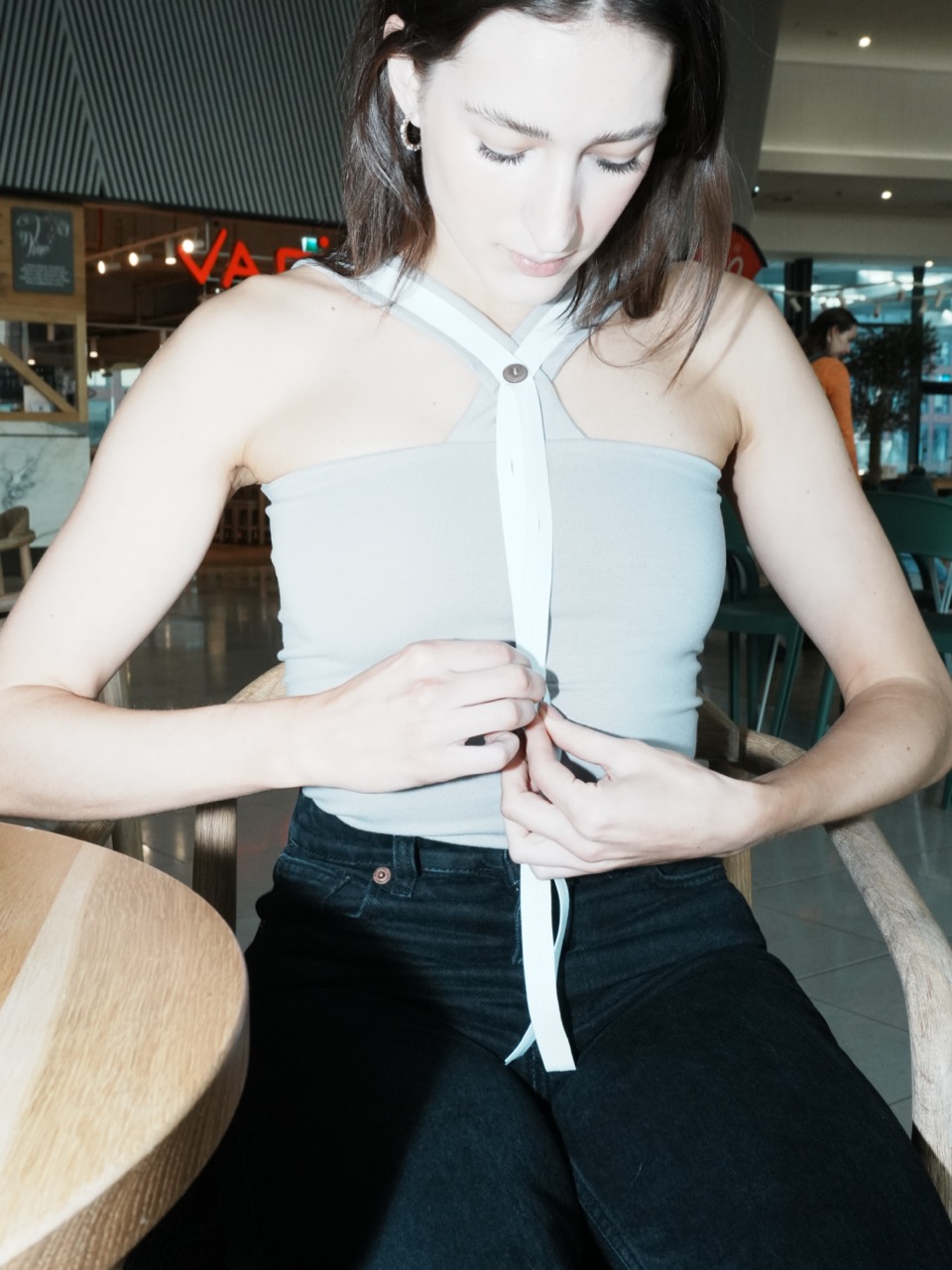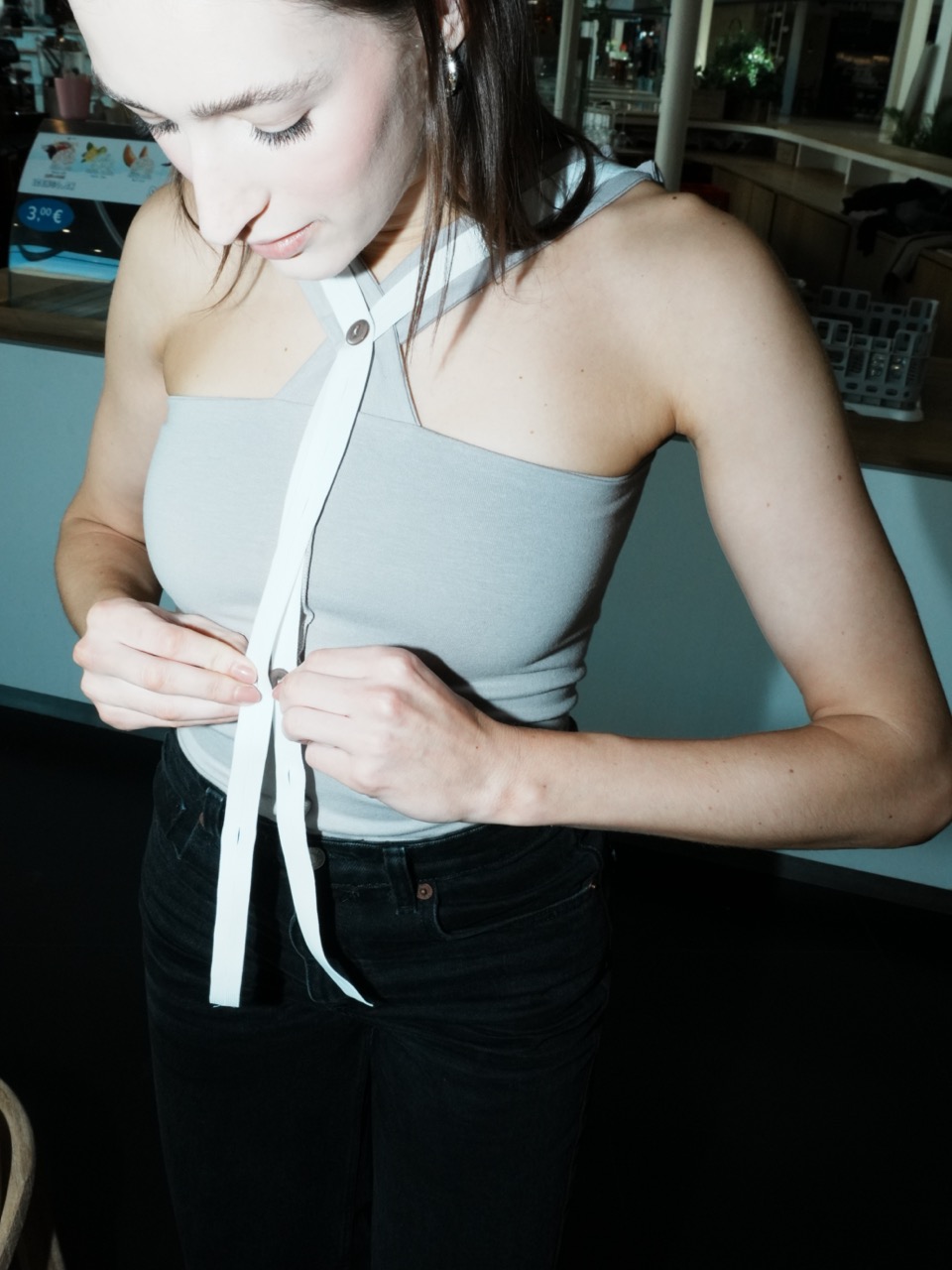(Dis)Embodied Garments

Design does not only result in form and function, it also results in feelings, affecting our state of wellbeing
Katie Gaudion
Wearing clothing is a multidimensional sensory experience: the smell of damp wool, its heavy weight as it holds onto water and the darker colour it takes on all play a part in creating a sensory experience for its wearer. In fashion practices, the visual aspect of dress is often prioritised over the other senses, despite wearing clothing being a multisensory experience. (Dis)Embodied Garments is an exploration of crafting garments that weave opportunity for a broader sensory experience for the wearer. These garments are made specifically for, and with, neurodivergent individuals who might have a more (inter)connected relationship with the senses.

Everyone and each body is different and this is reflected in sensory experience. Participatory design workshops were used to bring sensory experience to the forefront of the design process. Neurodivergent participants were encouraged to take on the role of fashion designer to create a range of low-fidelity prototypes. These prototypes highlight a range of personal, individual experiences of the senses and how clothing can play a part of this experience of day-to-day life. These insights inspired and informed high-fidelity counterparts that grew into a collection of items; (Dis)Embodied Garments, a series of high-fidelity prototypes that reflect the ways in which clothing can connect with the senses. The title reflects the vast ways in which clothing can be used to connect or disconnect with the wearer, depending on the participants individual experience, wants and needs.

Brittany is a fashion designer and design researcher exploring the connection between clothing and wellbeing through engagement of the non-visual senses. Brittany holds a BA in Fashion Design from Falmouth University, UK and has worked in fashion design and product development roles. Brittany advocates learning from a range of experiences through direct, meaningful, creative engagement of participants and hopes to highlight the huge breadth of ways that designers can create clothing that connects the body to the wearer through sensory engagement. She has brought her research to the Willem de Kooning Academie students and Falmouth University Fashion Design students. She aims to keep advocating for designing with the senses through (fashion) education and growing the collection of high-fidelity prototypes.
If you are interested in being a part of a workshop or would be interested in sharing these design values in an educational setting, please get in contact at brittanyethorpe[@]gmail[dot]com